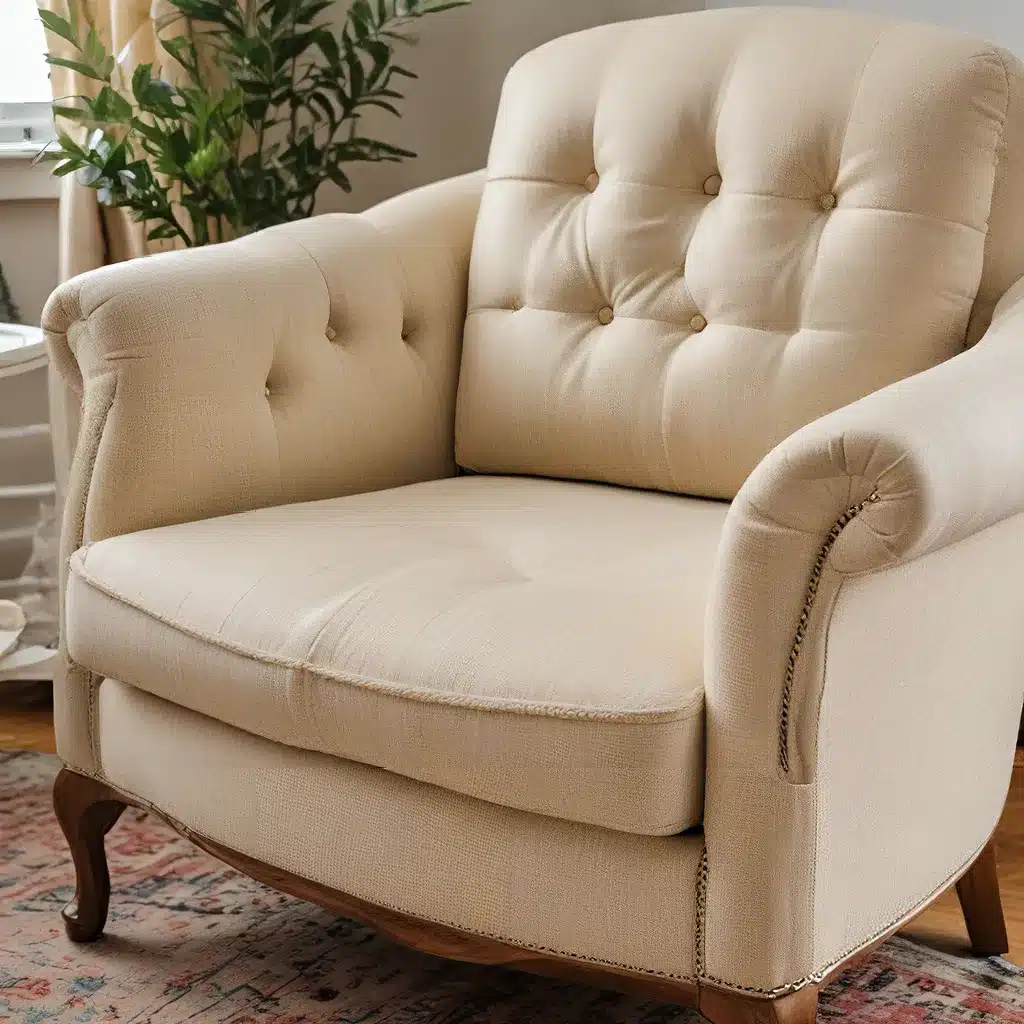
As someone who’s always been fascinated by the art of furniture restoration, I’ve had my fair share of experiences with reviving faded upholstery. It’s a delicate process, but with the right techniques and a bit of elbow grease, you can breathe new life into even the most weathered fabrics.
Unraveling the Mysteries of Fading
Upholstery fading is a common issue that plagues many homeowners. It’s not just an aesthetic problem; it can also be a sign of deeper damage to the fabric. But what exactly causes this frustrating phenomenon? Well, it turns out there are a few key culprits:
Sun Exposure: The sun’s ultraviolet rays are a major enemy of upholstery, breaking down the dyes and fibers over time. Fabrics that are constantly in direct sunlight are the most susceptible to this type of fading.
Wear and Tear: The friction and pressure of regular use can also take a toll on upholstery, causing the colors to fade and the fabric to become worn. Areas that see the most traffic, like seat cushions and armrests, are often the first to show signs of aging.
Cleaning Mishaps: Improper cleaning methods can also contribute to fading. Using harsh chemicals or scrubbing too aggressively can strip the fabric of its color and protective coatings.
So, what’s a furniture enthusiast to do? Fear not, my friends, for I’ve got some tips and tricks up my sleeve to help you revive those faded fabrics and restore your beloved pieces to their former glory.
Reviving the Faded: A Step-by-Step Guide
Step 1: Assess the Damage
The first step in any upholstery restoration project is to assess the extent of the fading. Take a close look at the fabric, paying attention to the areas that have been hit the hardest by sun exposure or wear and tear. This will help you determine the best course of action and the level of effort required.
Step 2: Try a Gentle Cleaning
Before you jump into any heavy-duty restoration techniques, it’s a good idea to try a gentle cleaning. Mix a mild detergent with warm water and use a soft-bristled brush to gently scrub the fabric. Be sure to test the solution in an inconspicuous area first to ensure it doesn’t cause any further damage.
Step 3: Explore Color Restoration Options
If the fading is more severe, you may need to explore some color restoration techniques. One popular option is to use a fabric dye or tint specifically formulated for upholstery. These products can help to reintroduce the lost color and even out any uneven fading.
Another approach is to use a color-matching spray paint. This can be a bit trickier, as you’ll need to find the perfect shade to match your existing fabric. But with a steady hand and a bit of practice, you can achieve some impressive results.
Step 4: Consider Professional Reupholstering
In some cases, the fading may be so severe that reupholstering is the best solution. This involves completely replacing the old fabric with a fresh, vibrant one. While it’s a more expensive option, it can breathe new life into a piece of furniture and ensure it looks as good as new.
When exploring professional reupholstering services, be sure to do your research and find a reputable upholstery specialist who has experience with your specific type of furniture. They’ll be able to guide you through the process and help you choose the perfect fabric to match your decor.
Preventing Future Fading
Of course, the best way to deal with faded upholstery is to prevent it from happening in the first place. Here are a few tips to help keep your fabrics looking their best:
- Limit Sun Exposure: Use curtains, blinds, or strategically placed furniture to minimize the amount of direct sunlight hitting your upholstered pieces.
- Rotate Cushions and Pillows: Regularly rotating the seating and back cushions can help to evenly distribute the wear and tear, preventing uneven fading.
- Use Fabric Protectors: Investing in a quality fabric protector can create a barrier against UV rays, stains, and everyday wear and tear.
- Clean Gently: When it’s time to clean your upholstery, use a gentle approach with mild detergents and soft-bristled brushes.
By following these preventative measures, you can extend the life of your upholstered furniture and keep it looking its best for years to come.
Embracing the Journey of Restoration
Reviving faded upholstery is a rewarding and satisfying process. It’s a chance to breathe new life into cherished pieces and give them a fresh start. Whether you choose to tackle the project yourself or enlist the help of a professional, the sense of accomplishment you’ll feel when your furniture is restored to its former glory is truly unparalleled.
So, what are you waiting for? Grab your cleaning supplies and get ready to transform your faded upholstery into a stunning showcase of your personal style. Who knows, you might even discover a hidden passion for furniture restoration along the way!
And remember, if you need a little extra help with your carpet cleaning needs, be sure to check out Carpet Cleaning Maconga. They’ve got the expertise and the tools to help you keep your entire home looking its best.

